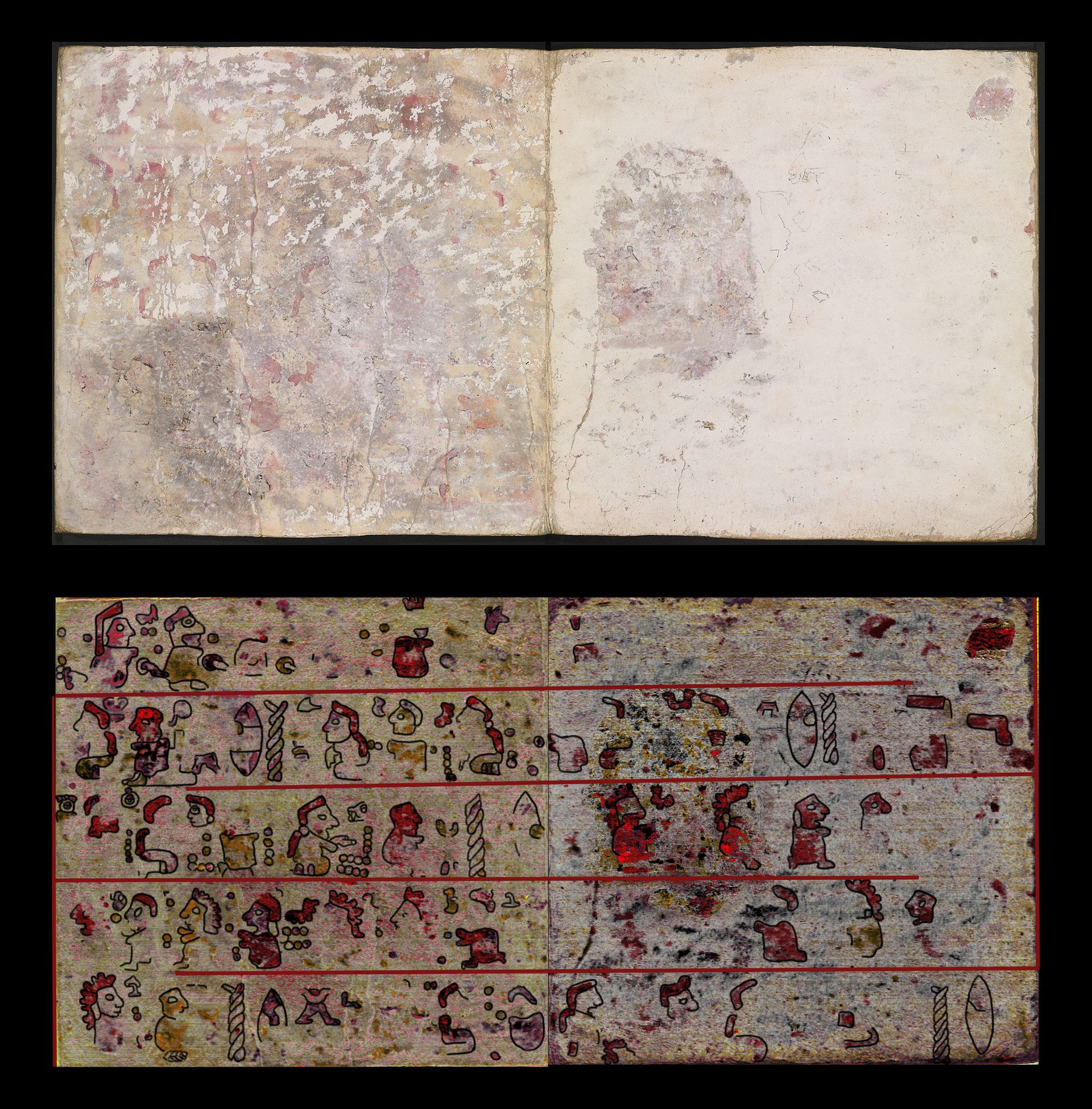A hyperspectral scanner—an image analysis tool used by astrophysicists to study the pigments of unknown substances, such as the colour of stars—may be the key to deciphering ancient documents.
In the Journal of Archaeology this month, researchers from the University of Oxford’s Bodleian Libraries and universities in the Netherlands published their analysis of seven pages from one of the 20 surviving pre- and early-colonial Mexican manuscripts. The scanning revealed pictures and glyphs hidden underneath a manuscript known as the Codex Selden or the Codex Añute. The five-metre-long 20-page document, made from deer hide covered with gesso, dates to around 1560 and comes from what is now the Oaxaca region in Mexico.
When the Bodleian Libraries acquired the manuscript in the 1950s, scholars speculated that it was a palimpsest, meaning the hide had been repurposed from an older document, and they conducted invasive scraping tests that partially revealed a vague image underneath. Because x-rays are not absorbed by the organic paints used in early Mexican manuscripts, there was no way to get a complete picture of what lay underneath the gesso without damaging the codex—until now. “We’ve learned valuable lessons about how to use [the hyperspectral scanner] in the future to this very fragile manuscript and for countless others like it”, said David Howell, the head of the Heritage Science and the Bodleian Libraries, in a press statement.

Scientists found various atypical images in the manuscript, some that include a prominent individual—speculated to be an ancestor character that is found in the other four surviving manuscripts from the region—who is repeatedly represented by a large glyph comprising a twisted cord and a flint knife. A scene showing 20 characters either sitting or standing in the same direction, which usually represents a king and his council, includes female characters, raising questions about the illustration’s meaning. Other common images from the area, such as red-headed women, women wearing headdresses, and people walking with sticks and spears, were also revealed.
Oxford researchers have recently used the hyperspectral scanner to uncover a devil underneath a centuries-old Armenian gospel book, and have analysed the medieval Gough Map, the earliest map of Great Britain, as well as the Bakhshali manuscript from India, which includes the first known use of the number zero.

